Abstract
We evaluated alveolar carbon monoxide (CO) levels of 122 male, adult hockey players active in recreational leagues of the Quebec City region (Canada), before and after 10 weekly 90-minute games in 10 different rinks. We also determined exposure by quantifying the average CO level in the rink during the games. Other variables documented included age, pulmonary function, aerobic capacity, and smoking status. Environmental concentrations varied from 1.6 to 131.5 parts per million (ppm). We examined the absorption/exposure relationship using a simple linear regression model. In low CO exposure levels, physical exercise lowered the alveolar CO concentration. However, we noted that for each 10 ppm of CO in the ambient air, the players had adsorbed enough CO to raise their carboxyhemoglobin (COHb) levels by 1 percent. This relationship was true both for smokers and non-smokers. We suggest that an average environmental concentration of 20 ppm of CO for the duration of a hockey game (90 minutes) should be reference limit not to be exceeded in indoor skating rinks.
Full text
PDF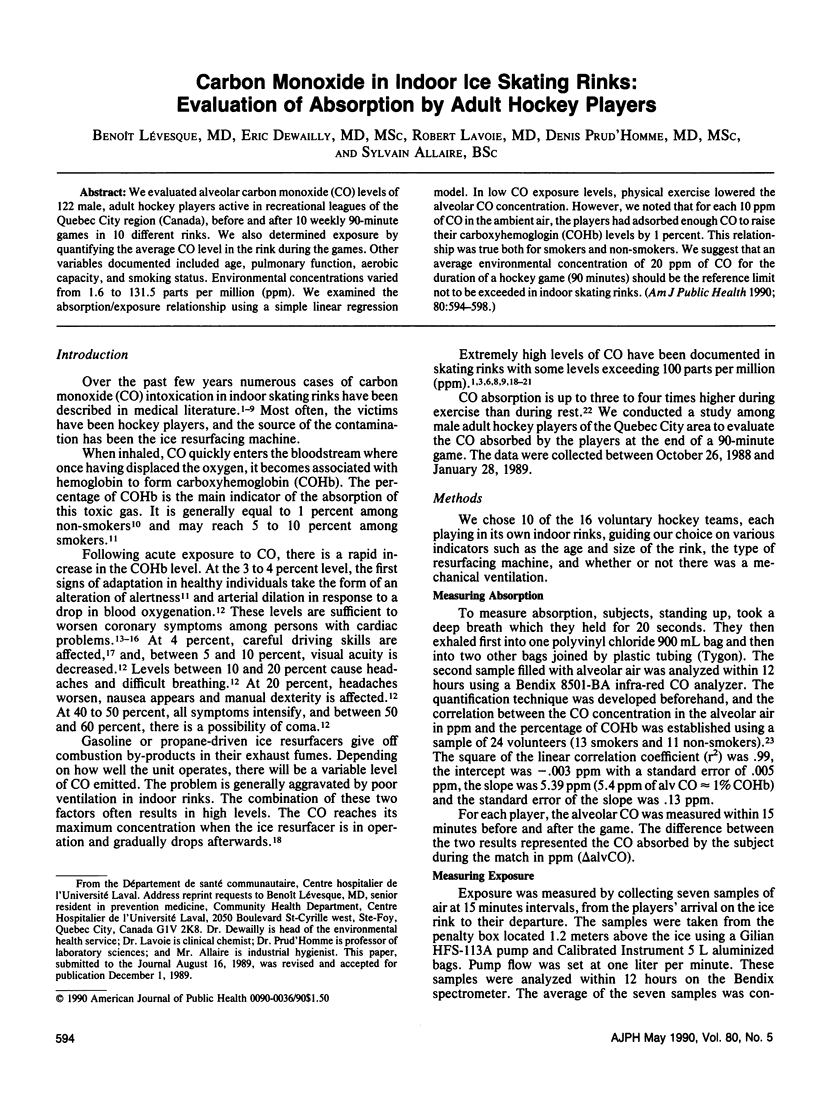
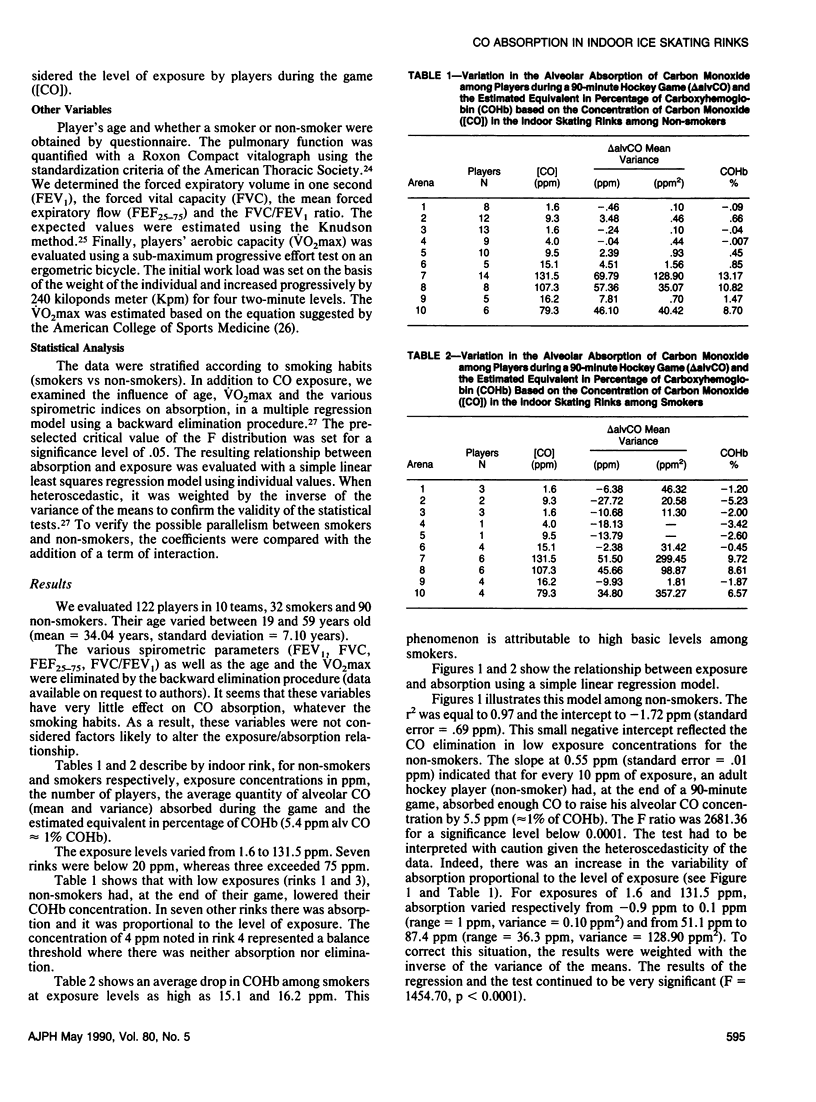
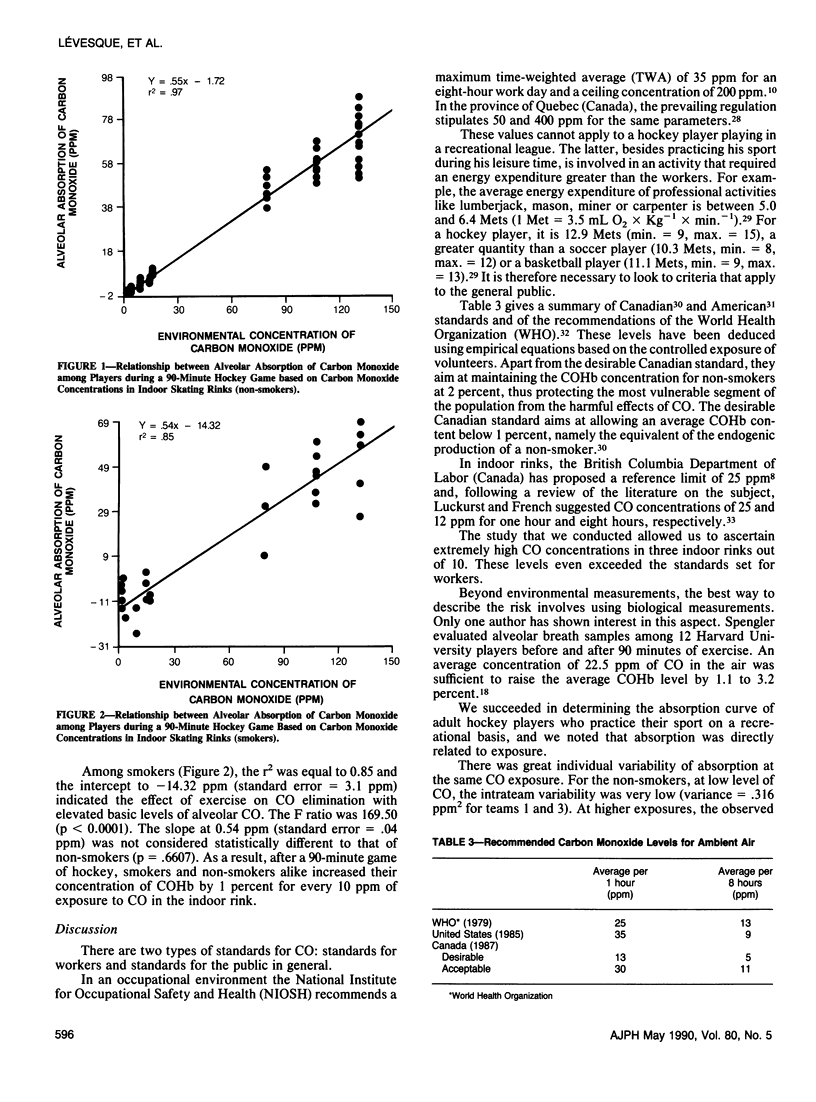
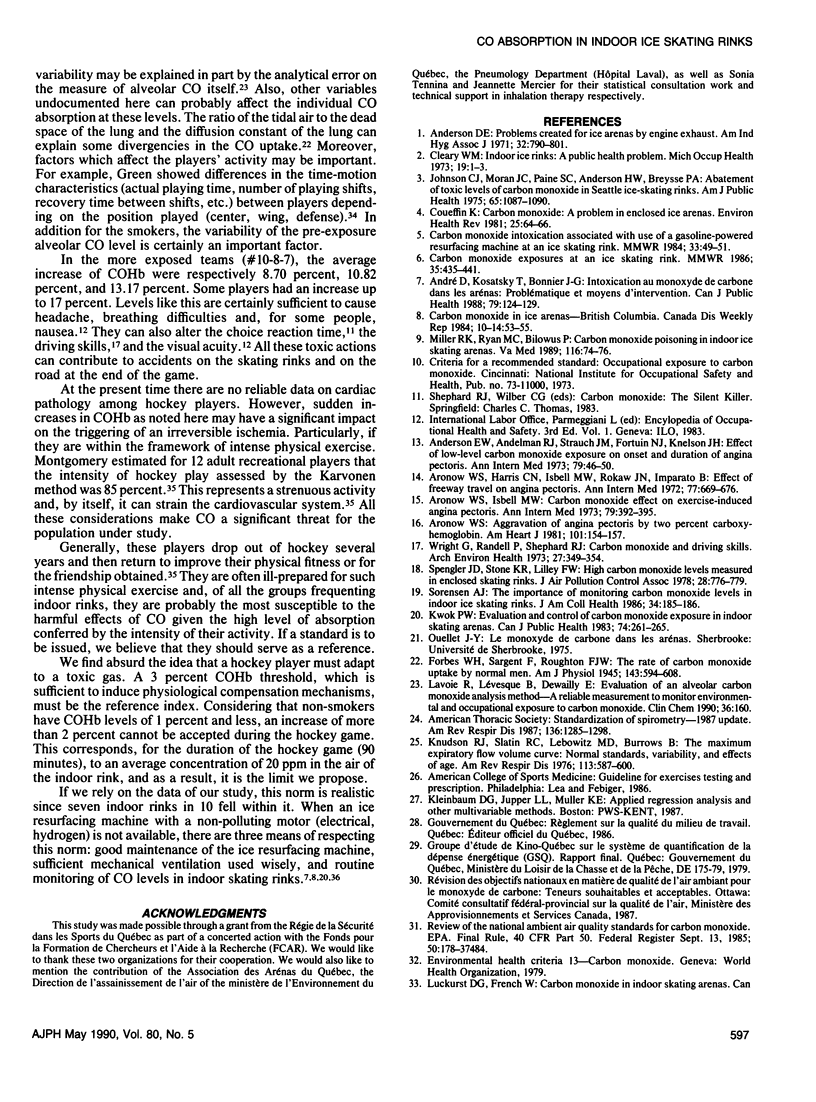
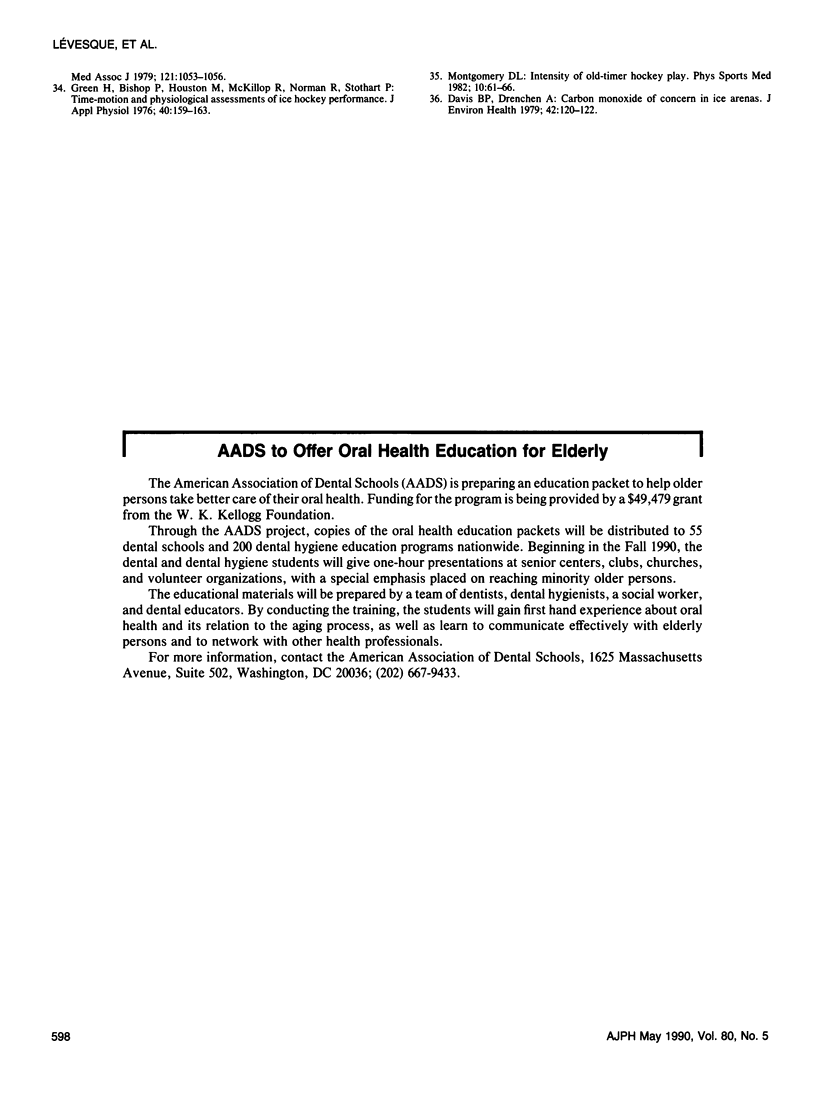
Selected References
These references are in PubMed. This may not be the complete list of references from this article.
- Anderson D. E. Problems created for ice arenas by engine exhaust. Am Ind Hyg Assoc J. 1971 Dec;32(12):790–801. doi: 10.1080/0002889718506542. [DOI] [PubMed] [Google Scholar]
- Anderson E. W., Andelman R. J., Strauch J. M., Fortuin N. J., Knelson J. H. Effect of low-level carbon monoxide exposure on onset and duration of angina pectoris. A study in ten patients with ischemic heart disease. Ann Intern Med. 1973 Jul;79(1):46–50. doi: 10.7326/0003-4819-79-1-46. [DOI] [PubMed] [Google Scholar]
- André D., Kosatsky T., Bonnier J. G. Intoxication au monoxyde de carbone dans les arénas: problématique et moyens d'intervention. Can J Public Health. 1988 Mar-Apr;79(2):124–129. [PubMed] [Google Scholar]
- Aronow W. S. Aggravation of angina pectoris by two percent carboxyhemoglobin. Am Heart J. 1981 Feb;101(2):154–157. doi: 10.1016/0002-8703(81)90658-x. [DOI] [PubMed] [Google Scholar]
- Aronow W. S., Harris C. N., Isbell M. W., Rokaw S. N., Imparato B. Effect of freeway travel on angina pectoris. Ann Intern Med. 1972 Nov;77(5):669–676. doi: 10.7326/0003-4819-77-5-669. [DOI] [PubMed] [Google Scholar]
- Aronow W. S., Isbell M. W. Carbon monoxide effect on exercise-induced angina pectoris. Ann Intern Med. 1973 Sep;79(3):392–395. doi: 10.7326/0003-4819-79-3-392. [DOI] [PubMed] [Google Scholar]
- Green H., Bishop P., Houston M., McKillop R., Norman R., Stothart P. Time-motion and physiological assessments of ice hockey performance. J Appl Physiol. 1976 Feb;40(2):159–163. doi: 10.1152/jappl.1976.40.2.159. [DOI] [PubMed] [Google Scholar]
- Johnson C. J., Moran J. C., Paine S. C., Anderson H. W., Breysse P. A. Abatement of toxic levels of carbon monoxide in Seattle ice-skating rinks. Am J Public Health. 1975 Oct;65(10):1087–1090. doi: 10.2105/ajph.65.10.1087. [DOI] [PMC free article] [PubMed] [Google Scholar]
- Knudson R. J., Slatin R. C., Lebowitz M. D., Burrows B. The maximal expiratory flow-volume curve. Normal standards, variability, and effects of age. Am Rev Respir Dis. 1976 May;113(5):587–600. doi: 10.1164/arrd.1976.113.5.587. [DOI] [PubMed] [Google Scholar]
- Kwok P. W. Evaluation and control of carbon monoxide exposure in indoor skating arenas. Can J Public Health. 1983 Jul-Aug;74(4):261–265. [PubMed] [Google Scholar]
- Lavoie R., Lévesque B., Dewailly E. Evaluation of an alveolar carbon monoxide analysis method. Clin Chem. 1990 Jan;36(1):160–160. [PubMed] [Google Scholar]
- Miller R. K., Ryan M. C., Bilowus P. Carbon monoxide poisoning in indoor ice skating arenas. Va Med. 1989 Feb;116(2):74–76. [PubMed] [Google Scholar]
- Sorensen A. J. The importance of monitoring carbon monoxide levels in indoor ice skating rinks. J Am Coll Health. 1986 Feb;34(4):185–186. doi: 10.1080/07448481.1986.9939636. [DOI] [PubMed] [Google Scholar]
- Spengler J. D., Stone K. R., Lilley F. W. High carbon monoxide levels measured in enclosed skating rinks. J Air Pollut Control Assoc. 1978 Aug;28(8):776–779. doi: 10.1080/00022470.1978.10470658. [DOI] [PubMed] [Google Scholar]
- Wright G., Randell P., Shephard R. J. Carbon monoxide and driving skills. Arch Environ Health. 1973 Dec;27(6):349–354. doi: 10.1080/00039896.1973.10666400. [DOI] [PubMed] [Google Scholar]


